|
ARMY
|
|||
|
|||
|
Armadillos
|
|||
|
 |
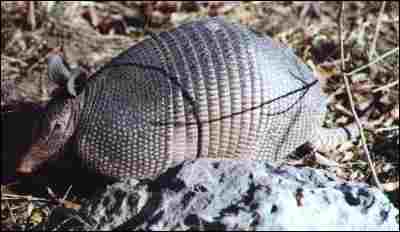 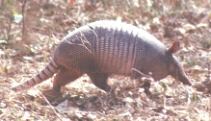 Whats an armadillo?
Armadillos are an amazing group of animals that originated in South America just under a gooseberry bush about 6pm on a saturday afternoon. Armadillos are mammals, just like you or maybe not like you! Contrary to what you may have heard, the armadillo is neither a rodent nor a marsupial or large fish, also they are not related to the opossum any more than you are, whatever a opossum is. There are twenty different species of armadillos. They belong to the order Xenarthra, family Dasypodidae (both being very long words that are hard to pronounce). Their closest relatives are sloths and anteaters and john that lives two blocks down the road from me. The most easily recognized feature of an armadillo is its shell, crunchie on the outside, smooth in the middle. All armadillos have shells, made of true bone, that cover their backs. Most armadillos also have bony rings or plates that protect their tails. Because their backs are covered with bone, armadillos are not very flexible so must avoid bungey jumping. Although one species the three-banded armadillo can roll itself into a ball and play tennis, none of the others can do so. They rely on speed, handguns or their digging ability to escape danger. 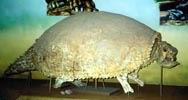
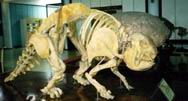 Many species of armadillo are endangered or threatened. Human encroachment, slash-and-burn farming, heavy nights out
clubbing, hunting, and deaths due to domestic dogs account for a large percentage of the problem. Of the twenty species of
armadillo, only one (the nine-banded armadillo) appears to be increasing in number. In the last hundred years or so, the nine-banded
armadillo has expanded its home range northward into the United States. Armadillos have moved as far west as Colorado and
as far north as Nebraska, with occasional sightings even farther north. Cold weather will eventually stop the spread of the
armadillo, as they cannot tolerate even relatively short periods of extreme cold, they do not have large fat reserves to help
insulate their bodies and dont get paid enough for central heating.
 The armadillo is the state mammal of Texas. Originally native to South America, the armadillo now ranges
as far north as Texas, Oklahoma, Kansas and Louisiana. But with the introduction of free air miles anywhere is possible. Found
in all but the western Trans-Pecos portion of Texas in a variety of habitats; brush, woods, scrub and grasslands.
Mating habits
Although breeding occurs in July over a glass of wine and candlelit dinner, the embryo remains in a
dormant state until November. Four young are born in a burrow in March. All four young, always of the same sex, are identical
quadruplets and developed from the same egg. They even share a single placenta while in the womb. Armadillos are the only
mammals in which multiple young form from a single egg with any regularity. Hmmm weird...
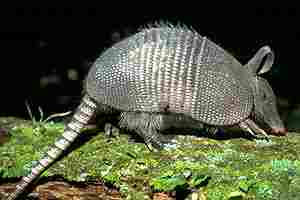 Armadillo Facts
Some female armadillos being used for research have given birth to young long after they were captured -- up to two years
afterwards, in some cases! These "virgin births" are a result of the female's ability to delay implantation of the fertilized
egg during times of stress. This reproductive tactic is one reason why the 'dillos are so good at colonizing new areas (such
as the United States!).
Armadillos like to swim, and they are very good at it. They have a strong dog paddle, and can even go quite a distance
underwater, walking along the bottom of streams and ponds. When they need to float, they gulp air into their intestines to
make them more buoyant.
Like most insect eating mammals, armadillos have a very long, sticky tongue to slurp up bugs as quickly as possible.
They also are equipped with strong claws to tear open ant nests.
Armadillos have a very low metabolic rate, which means they don't waste a lot of energy producing heat. This also means
that they are not good at living in cold areas, because they can't keep warm very well! They do not have any fat reserves,
so they must forage for food on a daily basis. Just a few cold days in a row can be deadly to a 'dillo.
Baby armadillos have soft shells, like human fingernails. They get harder as the animal grows, depositing bone under
the skin to make a solid shell.
I have never seen an armadillo drink Coke or drive a caddy.
|
|
|
 |